The month of July is a time for Americans to look back at the country’s past—specifically to that indelible moment in 1776 when the Second Continental Congress declared independence from Britain. But, while the nearly 250 years since then have been chock full of major milestones, not every moment that shaped the country gets the credit it deserves.
With that in mind, TIME asked 15 experts to each nominate an unsung moment from American history. These are events that, though not necessarily widely known today, either changed the national story in some important way or embodied a significant current. And if you don’t know about them yet, these historians will explain why they think you should.
Here, their choices:
Oneida allies help George Washington’s army at Valley Forge (1777-8)
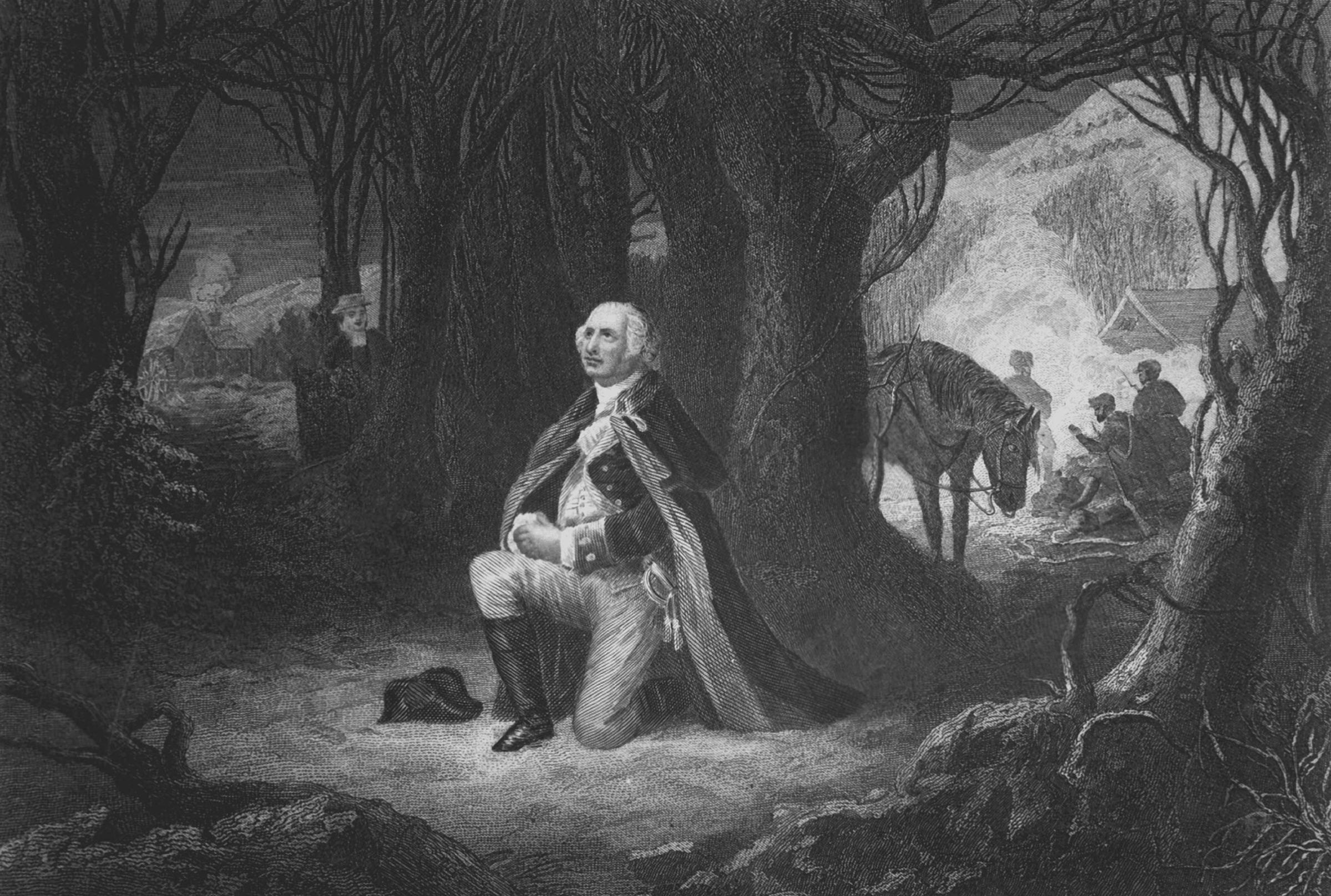
During the Revolutionary War, the Oneida allies of the revolutionary army walked hundreds of miles from their homeland in what is now upstate New York to relieve the famine at Valley Forge in the winter of 1777-78. They carried hundreds of bushels of white corn on their backs and, once in George Washington’s encampment, they taught the revolutionaries how to prepare it so it was edible, and thus saved the starving army. But the role tribal nations played on the side of the United States during that conflict — and by extension in every subsequent one — has been largely ignored. Perhaps most ignobly, Washington himself seems to have forgotten his allies: immediately after the war he burned and destroyed dozens of Iroquois villages in upstate New York to make way for settlement and in indiscriminate retribution for the help some tribes gave the British. I think it’s safe to say the true rich legacy of Indian/Anglo relations has been elided in favor of American myths and fantasies, and there is no place in such myths for the sense that America was not made in opposition to Native life but in relation to it.
David Treuer, a professor of English at the University of Southern California, is the author of The Heartbeat of Wounded Knee: Native America from 1890 to the Present.
Read more about George Washington, here in the TIME Vault
Congress decides the Constitution will have amendments (1789)
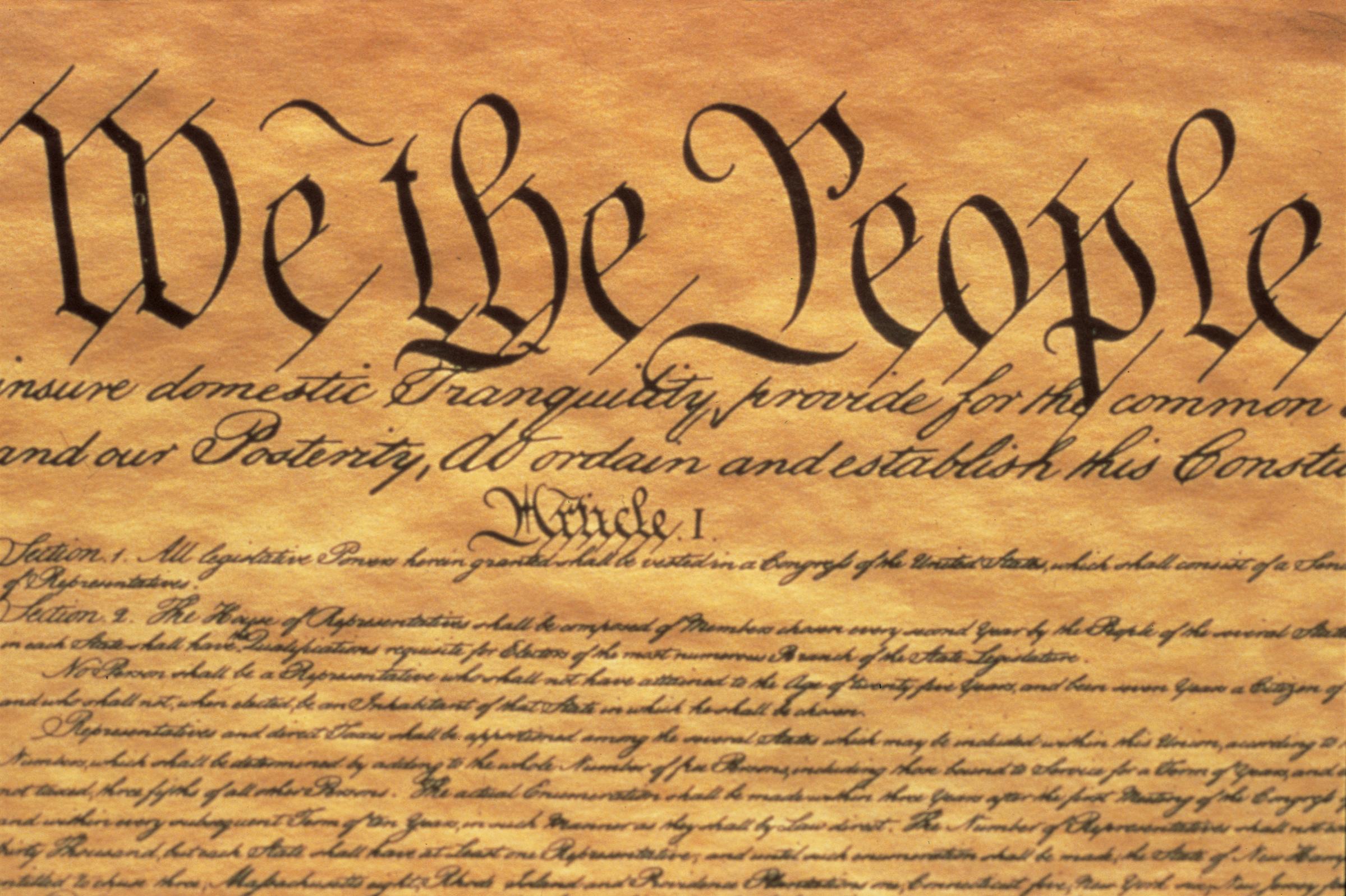
If you ask most Americans to name something in the Constitution, there’s a good chance they’d name one of the first ten amendments, better known as the Bill of Rights. They might single out the freedom of speech or religion, or the right to bear arms, or prohibitions against cruel and unusual punishment. But before the Founders could determine which rights to safeguard, they first had to decide how amendments would be added. In August of 1789, debate broke out in the First Federal Congress over this very issue. James Madison preferred that amendments be seamlessly integrated into the text, while Roger Sherman fought to have them added at the end like an appendix. Madison lost this fight — with enormous ramifications for the way we see and understand the Constitution today. Had Madison prevailed, there would be no First or Second Amendment; their various previsions would have simply been scattered throughout Article I. Moreover, there would be no “Bill of Rights” at all. It would take well over a century before Americans identified the first amendments in this now-famous way. Only because they were set apart, textually and visually, from the first seven articles was this ever possible.
Jonathan Gienapp, an assistant professor of history at Stanford, is the author of The Second Creation: Fixing the American Constitution in the Founding Era.
Read more about the Constitution, here in the TIME Vault
New York City gets a botanical garden (1801)

In 1801, on 20 acres of Manhattan farmland, an American doctor founded the first public botanical garden in the United States. David Hosack’s vision was for a medical and agricultural research facility that would nurture his young nation. He amassed a collection of more than 3,000 native and non-native species, among whose contributors were Aaron Burr and Thomas Jefferson. Hosack used his garden to conduct some of the earliest pharmacological research in the United States and helped bring into being the first generation of professional American botanists. Meanwhile, his medical students went on to found American hospitals, clinics and medical journals. At the time of his death, Hosack was famous in the United States and Europe — in part for his civic work and in part for his role as attending physician at the 1804 duel of his friends Alexander Hamilton and Aaron Burr. In 1814, Columbia University acquired Hosack’s land from the state of New York, which had purchased it from Hosack to run for the public benefit. Columbia eventually leased the land to John D. Rockefeller Jr., who built Rockefeller Center on the site; few know that land was once a garden — and yet today there are botanical gardens conducting environmental research and education in every state, continuing the work Hosack started.
Victoria Johnson, an associate professor of urban policy & planning at Hunter College of the City University of New York, is the author of American Eden: David Hosack, Botany, and Medicine in the Garden of the Early Republic.
Read more about that land, here on TIME.com
Maria Stewart speaks in Boston (1832)
In April 28, 1832, African-American writer and lecturer Maria Stewart spoke before Boston’s Afric-American Female Intelligence Society — becoming the first American woman on record to speak about politics to an audience comprised of both men and women. In her lectures on the challenges of ending slavery and securing civil rights, Stewart called into question men’s leadership, suggesting that it was time for black women to exercise greater public influence. Though she had supporters, many thought Stewart had gone too far. Ridicule led Stewart to deliver her “farewell” address in September 1833. She was not done, however, and spent the balance of her life training future generations of young black women to enter public life. Early histories of the women’s suffrage movement too often obscured the roles played by those, like Stewart, who had come before its authors, who included Susan B. Anthony and Elizabeth Cady Stanton. Their version was long accepted as authoritative. Historian Marilyn Richardson revealed a new story when she recovered Stewart’s legacy for us in her 1987 book Maria W. Stewart: America’s First Black Woman Political Writer. Stewart’s 1832 speech remains a lesson for today as we witness the rise of a new generation of women of color in politics — they are Maria Stewart’s daughters.
Martha S. Jones, a professor of history and Society of Black Alumni Presidential Professor at Johns Hopkins University, is the author of Birthright Citizens: A History of Race and Rights in Antebellum America.
Read more about Maria Stewart, here on TIME.com
Lydia Maria Child writes on religion (1855)
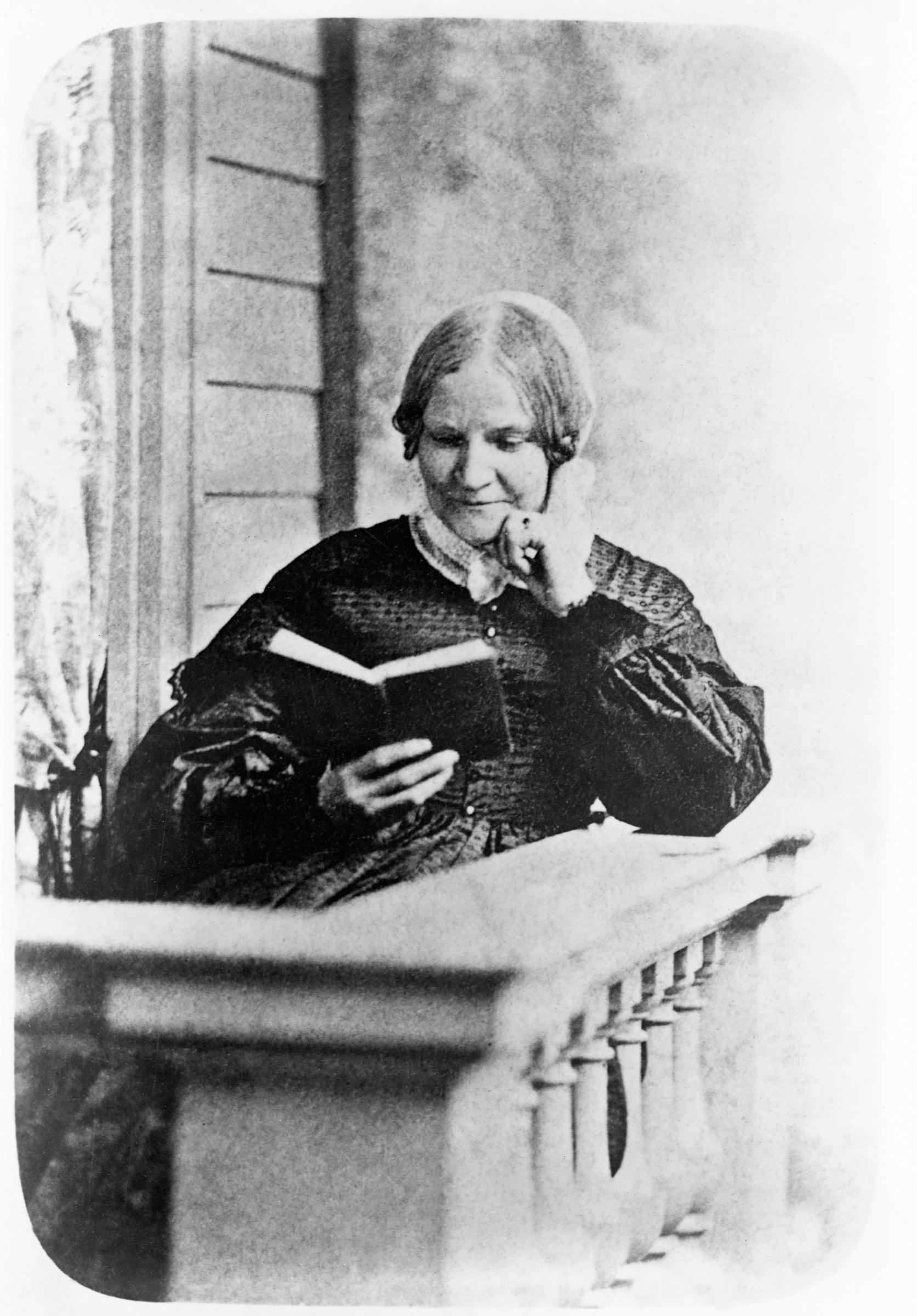
In 1855 the writer Lydia Maria Child, a Transcendentalist and ardent abolitionist, brought out her three-volume work The Progress of Religious Ideas, Through Successive Ages. Her book was one of the first works on comparative religions written by an American, and remarkable for its dispassionate consideration of non-Christian religions, including Islam. As a “womanist” and abolitionist, she admired that Islamic law allowed women to own property and considered manumission praiseworthy, forbidding believers to enslave one another. She also thought Christians hypocritical in ignoring the violence of the Bible and focusing overly on that in the Qur’an. Although Child was one of the more successful novelists and essayists of the 19th century, she is now little taught and is no longer widely read. Our current assumptions about 19th century American thought on both Islam and women might be very different if her fame had endured.
Juan Cole, the Richard P. Mitchell Professor of History at the University of Michigan, is the author of Muhammad: Prophet of Peace Amid the Clash of Empires.
Read more about Transcendentalism, here in the TIME Vault
Abolitionists circulate images of “Emancipated Slaves, White and Colored” (1864)
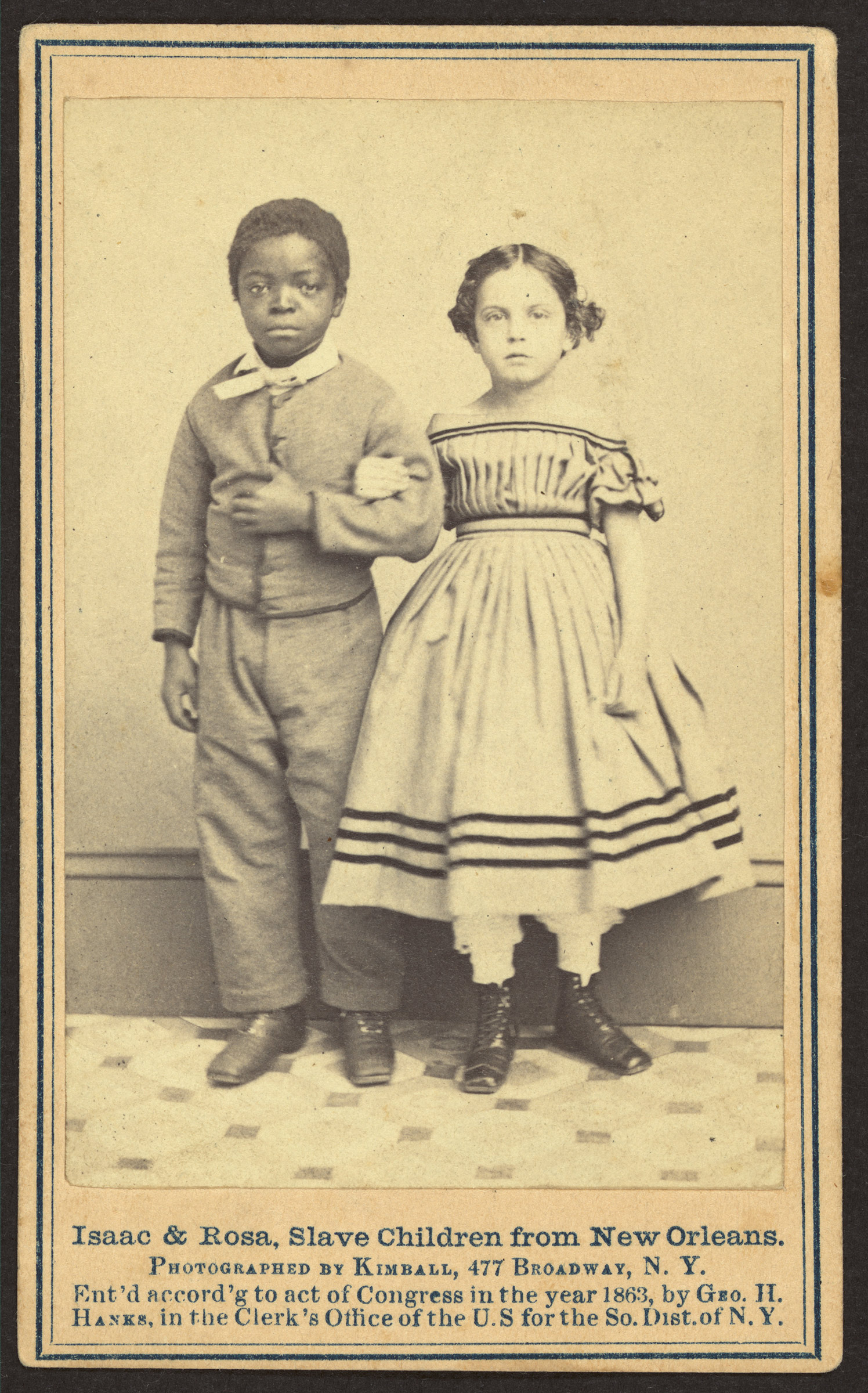
On Jan. 30, 1864, Harper’s Weekly printed a large engraving of a group of recently emancipated children and adults. The caption described them as “Emancipated Slaves, White and Colored”; the images were based on widely circulated abolitionist photographs of emancipated children from New Orleans, including some who are white-passing. Readers of Harper’s were presumably convinced of slavery’s moral evils, but this didn’t mean that they didn’t still hold racial biases against African Americans that made them uncritically accept the logics of racism. The truly pressing fear this image was meant to capitalize on was that if we can’t read race by just looking, and people considered legally black could pass for white, then what was to stop the same system of legal slavery from mistaking free white citizens for the enslaved?
This story underlines the impossibility of a system of slavery based on race, but images and articles like this one are under-known and under-discussed. One reason may be that historians and the general public are wary of bringing in historical examples of the “white slavery” narrative, because they’re fearful it will get folded into the onslaught of contemporary false material about white slavery that circulates in extremist groups to minimize the historic grievances of African Americans. Another is likely some discomfort around the idea that Northern abolitionists could be both vehemently anti-slavery and also racist. So often we narrate history as if there are definitive lines drawn between good and evil. But actually historical events are animated by the actions of individuals, who are always much more contradictory in their viewpoints and politics.
Danielle Bainbridge, an assistant professor in the department of theater at Northwestern, is the host of the PBS Digital Studios web series The Origin of Everything.
Read more about abolition, here on TIME.com
Henrietta Wood wins restitution (1878)
In 1878, a black woman named Henrietta Wood won an early and largely unknown case of restitution for slavery. Though born enslaved in Kentucky in 1818 or 1820, Wood had been living as a free woman in Cincinnati in 1853 when she was kidnapped and re-enslaved by a white Kentuckian named Zebulon Ward; she ended up living in slavery until after the Civil War. But in 1869, Wood returned to Cincinnati and filed a lawsuit against Ward for $20,000 in damages and lost wages. A federal court handed her a verdict for $2,500, an amount worth $60,000 today. It is the largest known sum ever awarded by a U.S. court in restitution for slavery, and it received widespread press coverage at the time — but, as Reconstruction gave way to the Jim Crow era and stories like hers were obscured by Lost Cause myths, it was forgotten by almost everyone except Wood and her son, who went on to become a lawyer in Chicago. Yet this unsung moment in history deserves to be revisited. It not only shows that formerly enslaved people struggled to win reparations from the very beginning, but also serves as a case study of the differences that restitution could make.
Caleb McDaniel, an associate professor of history at Rice University, is the author of Sweet Taste of Liberty: A True Story of Slavery and Restitution in America, forthcoming Sept. 2 from Oxford University Press.
Read more about reparations, here on TIME.com
Chinese immigrants refuse to register (1892)
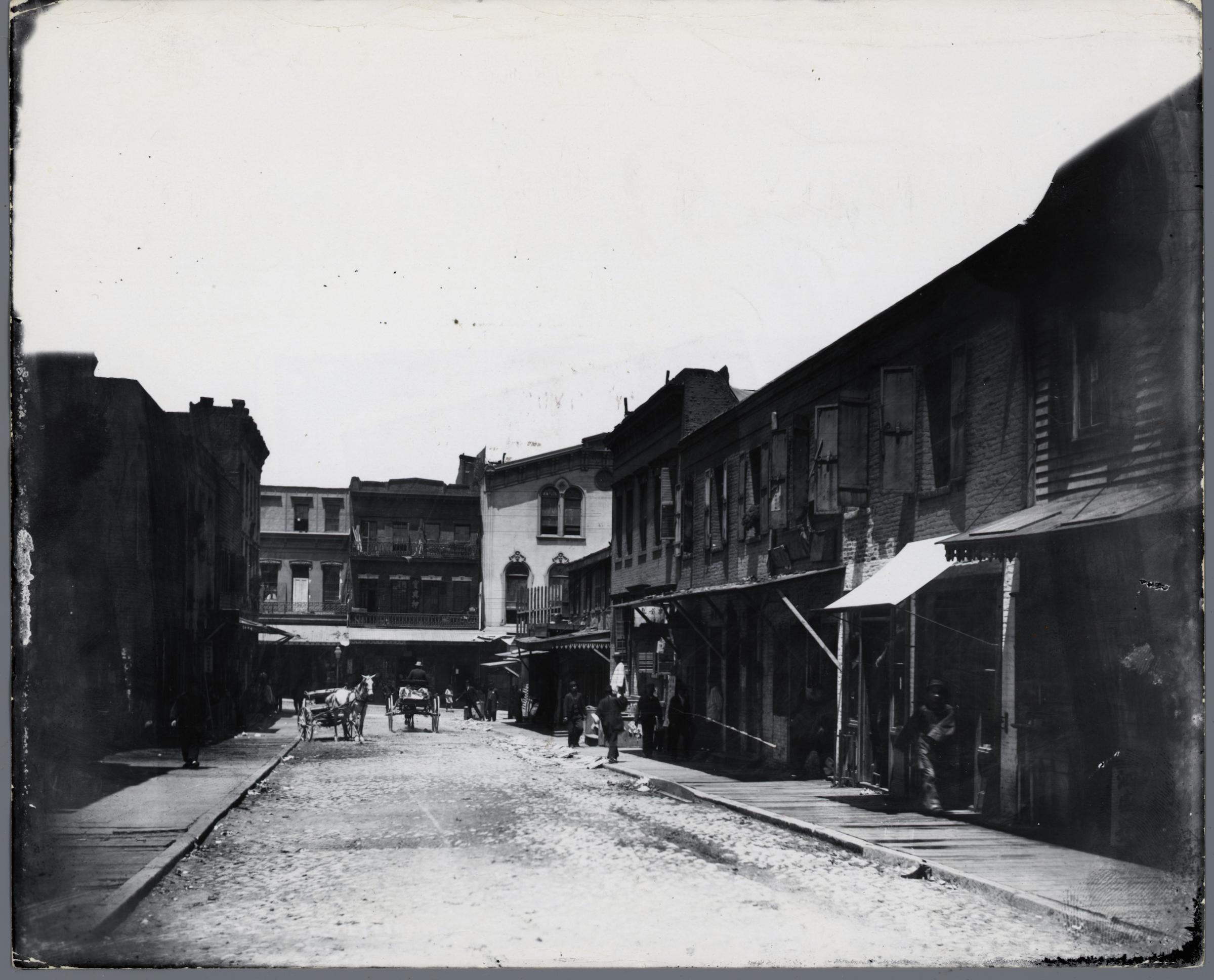
After the Geary Act of 1892 renewed America’s policy of excluding Chinese immigrants based on their race and class — and also required those who were already here to register with the U.S. government or face deportation — Chinese immigrants in the United States participated in an act of mass civil disobedience. Nearly 90,000 Chinese immigrants refused to register by the deadline, grinding U.S. immigration control to a halt. The U.S. simply did not have the money or manpower to deport 90,000 immigrants, so it could not enforce the law; a man named Fong Yue Ting also challenged the law before the Supreme Court. But, although the protest marked a high point in immigrant activism, the court ruled that the U.S. did have the power to deport immigrants even if they were long-term residents in the United States. Following the ruling, most of the protesters relented and registered with the U.S. government, and their fight was forgotten by many. And yet Justice Stephen Field delivered a dissent in Fong Yue Ting v. U.S. (1893) that bears repeating today. “As to its cruelty,” he wrote, “nothing can exceed a forcible deportation from a country of one’s residence, and the breaking up of all the relations of friendship, family, and business.”
Beth Lew-Williams, an assistant professor of history at Princeton University, is the author of The Chinese Must Go: Violence, Exclusion, and the Making of the Alien in America.
Read more about the Chinese Exclusion Act, here on TIME.com
Rural Free Delivery begins (1896)
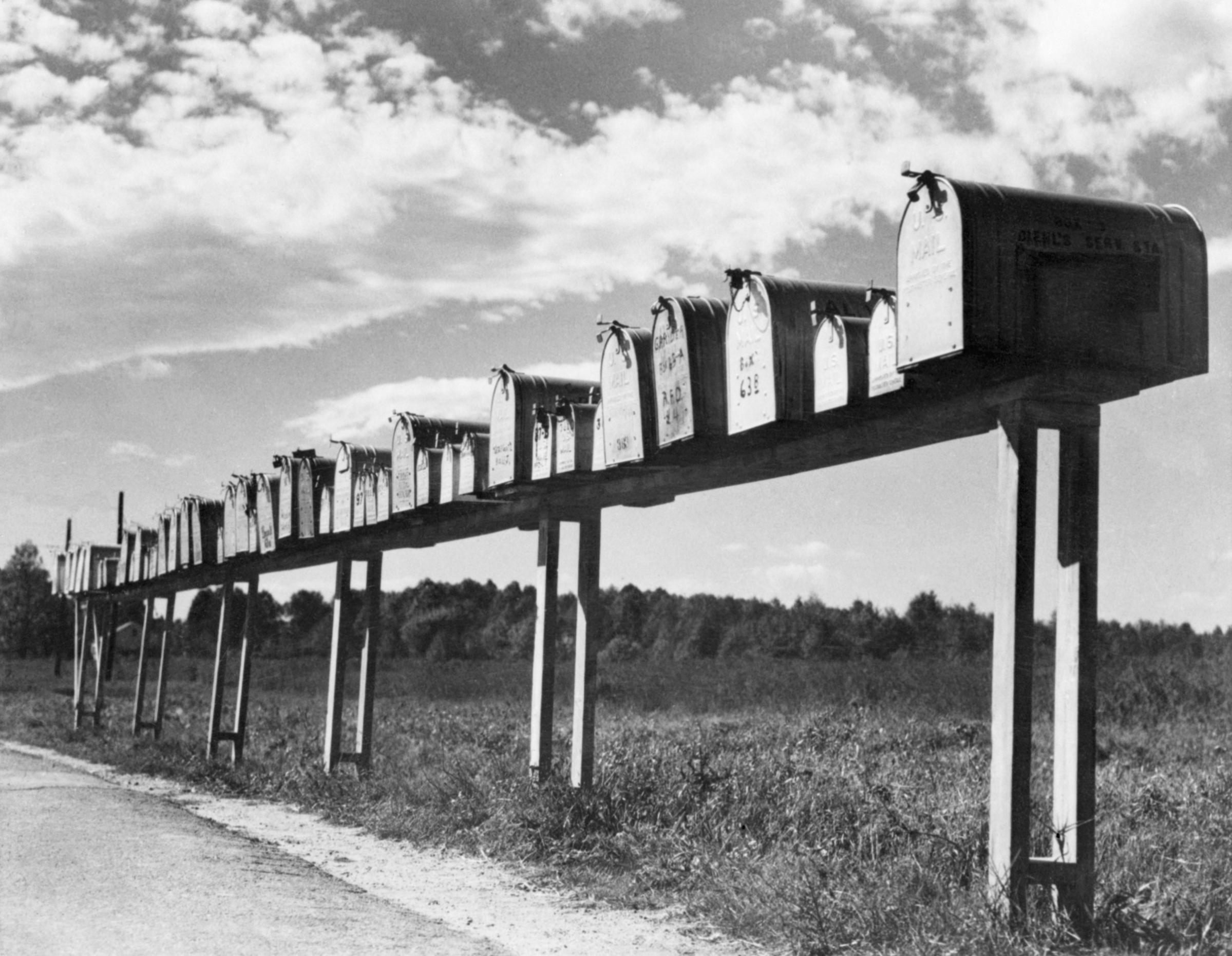
Urban Americans had been receiving their mail at home since 1863. But rural Americans had had to trek dozens of miles to their nearest Post Office, not even knowing whether there was any mail waiting for them. When Congress voted for Rural Free Delivery, or “RFD,” politicians hoped that daily mail delivery could get vital information to farmers and ease the isolation of farm life. Millions of rural people eagerly subscribed to daily newspapers and monthly magazines once RFD made it affordable, and the mail-order catalogs that came through the post put some of the luxuries of urban life within reach of rural families: wrist watches, French lace, electric toasters. RFD had some unintended consequences too; when farmers stopped traveling to town to get the mail and started shopping in catalogs, local businesses suffered. Because it proved difficult for postmen to navigate narrow muddy roads, the federal government devoted funds to improve post roads, first in 1916 and again in 1936. This made a vast difference for rural people’s ability to take their crops to market and send their children to school. Rural Free Delivery cost the government $40 million per year in the 1910s, and that money improved access to goods and information for millions of people. But we don’t always make the connection between the tax we pay and the services that benefit us, and when government programs work well, we sometimes forget they’re there at all.
Julia Guarneri, a university lecturer in American history at the University of Cambridge, is the author of Newsprint Metropolis: City Papers and the Making of Modern Americans.
Read more about Rural Free Delivery, here in the TIME Vault
The Texas Legislature investigates the Rangers (1919)
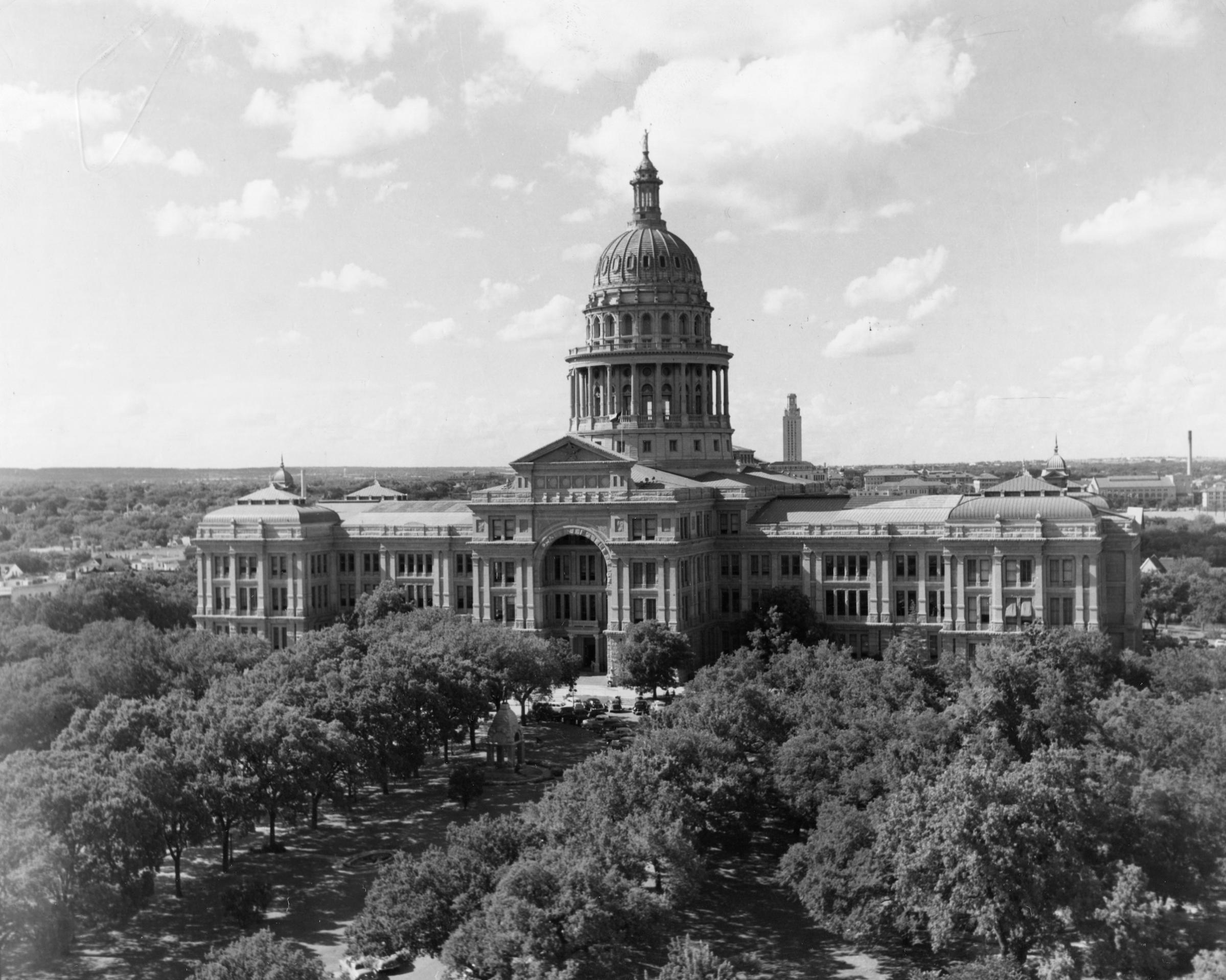
Between 1910 and 1920, state law enforcement officers and Anglo vigilantes in the Texas-Mexico borderlands murdered hundreds of ethnic Mexican residents, American citizens and Mexican nationals alike. Assailants rarely faced arrest and grand juries regularly failed to indict the accused for wrongdoing. For members of law enforcement, a culture of impunity prevailed. The abuses were so extensive that in 1919 the Texas legislature agreed to investigate charges. The records left by the investigation of the Texas Rangers leave a clear record of state crimes but also a record of state agents attempting to justify the violence. On Feb. 19, the commission declared that, though the charges of misconduct were “established by sufficient and competent evidence,” the border remained a dangerous place. The state reduced the number of agents, but the Texas Rangers continued with widespread support.
In the years following the 1919 investigation, the state legislature, the media and historians actively worked to undo any damage that had been done to the perception of the state police. The records of the proceedings were filed away in the Texas State Archives in Austin; access to the documents was limited as the Ranger myth flourished in Hollywood and elsewhere. Today, the nearly 1600 pages of documents are digitally available for view through the Texas State Archives, but the myth of the Texas Rangers continues to loom large. A century later, worrisome trends of police abuse and the denial of rights and protections for migrants continues.
Monica Muñoz Martinez, an assistant professor of American studies & ethnic studies at Brown University, is the author of The Injustice Never Leaves You: Anti-Mexican Violence in Texas.
Read more about the establishment of the Texas Rangers mythology, here in the TIME Vault
The first Social Security numbers are assigned (1936)

In November of 1936, the fledgling Social Security Board set out to assign unique nine-digit numbers to some 26 million U.S. workers, calling this a task “of a magnitude never before equaled in any Government or private undertaking.” The first Social Security number was issued on the first of December to a man named John David Sweeney Jr., a 23-year-old whom TIME quoted as noting that his retirement was “a long way off.” The SSN was a product of its time: the economic wreckage of the Great Depression and the New Deal ambitions of Franklin D. Roosevelt. Although the identifying digits were overshadowed by the nation-changing program of which they were part, those numbers would become affixed to nearly every American life across the next century, spurring new uses of punch cards and filing systems as well as novel dilemmas around data. Over time, the SSN became a de facto national ID, used by banks and insurance agencies, to track tax returns, and to identify college students. By the 1970s, the number indexed a wealth of sensitive information in computer data banks, prompting major privacy legislation. In our own time the SSN is as often associated with risk — from identity theft or data breaches — as security, something that could not have been anticipated by the newly numbered Americans of the 1930s.
Sarah E. Igo, director of the program in American Studies and associate professor of history at Vanderbilt University, is the author of The Known Citizen: A History of Privacy in Modern America.
Read more about the first Social Security Numbers, here in the TIME Vault
The Women’s Army Auxiliary Corps is born (1942)
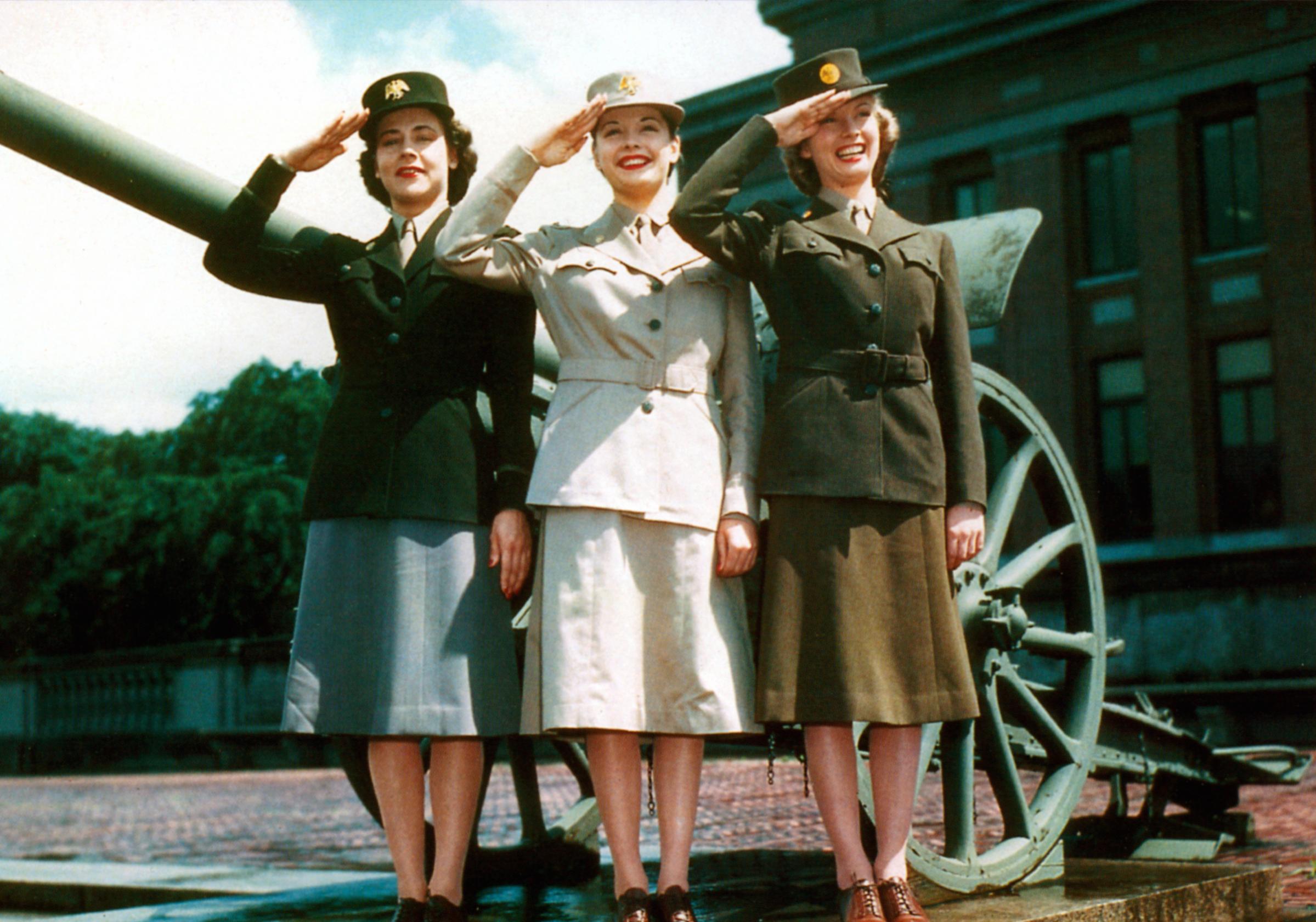
In 1941, Congresswoman Edith Nourse Rogers (R-MA) introduced legislation to create the Women’s Army Auxiliary Corps, seeking to bring opportunities and equality to women who served in the American military. Her goal was to improve on the treatment women faced during World War I, but the bill was met with criticism, including from Representative Clare Hoffman (R-MI) who questioned, “who then will do the cooking, the washing, the mending, the humble homey tasks to which every woman has devoted herself?” The next year, after Congressional debate, with the blessing of George C. Marshall and signature of President Roosevelt, the WAAC began operations. When it was converted to become a part of the Army, losing its auxiliary status, its members became the first non-nurse women to serve in the U.S. Army. In supporting America’s mobilization during World War II, over 150,000 women served as WACs, continuing to shift the norms of women in the military and in our society, paving the way for future advancements in both. Rosie the Riveter may be the more famous image of women serving the country during WWII, but the creation of the WAACs defined a cultural and military shift that blossomed into increased opportunities for women.
Joseph Welch, a social studies teacher at North Hills Middle School in Pittsburgh, was named the 2018 National History Teacher of the Year by the Gilder Lehrman Institute of American History.
Read more about the WAACs, here in the TIME Vault
Perfecto Martinez is confined as a “sexual psychopath” (1948)
On Feb. 10, 1948, in San Bernardino, Calif., Perfecto Martinez was charged with and convicted of the crime of “being an idle, lewd and dissolute person” for appearing in public dressed in female clothing. The court sentenced Martinez to six months in the county jail, but, a few weeks into the term, another court determined them (it’s not clear what their gender identity was) to be a “sexual psychopath” and had them transferred to a state hospital to remain indefinitely until they “recovered.” Martinez was confined until at least 1955. Sexual psychopath laws fell out of favor in the 1960s and ’70s, when psychiatrists, criminologists, LGBTQ activists and others challenged their legitimacy — especially for the way in which those laws were used to pathologize and criminalize LGBTQ people. Even so, when lawmakers later enacted a flurry of “sexually violent predator” and “civil commitment” laws, this time focused on the goal of protecting children, they still imported some of the problematic tactics of that earlier era, including indefinite confinement.
Perfecto Martinez’s incarceration took place in the context of the so-called Lavender Scare, a midcentury social and political crackdown on LGBTQ people around the same time as the Red Scare. While the phenomenon of the Red Scare and its effects on political dissidents are well known, the Lavender Scare is just beginning to be incorporated into narratives about U.S. history.
Scott De Orio, a Mellon Postdoctoral Fellow at the Sexualities Project at Northwestern, was the 2019 winner of the John D’Emilio LGBTQ History Dissertation Award from the Organization of American Historians.
Read more about the Lavender Scare era, here on TIME.com
Fannie Lou Hamer testifies (1964)
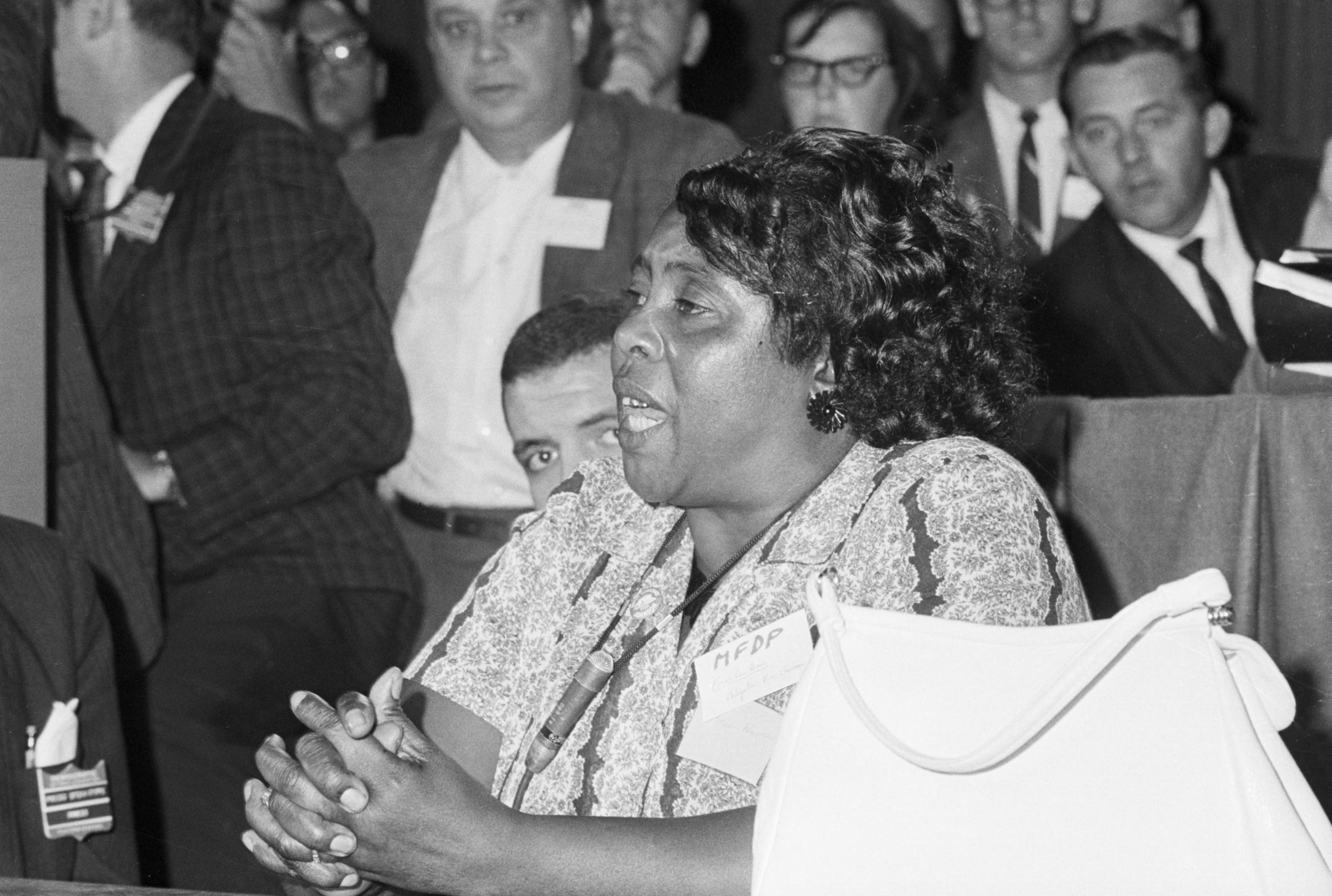
On Aug. 22, 1964, Fannie Lou Hamer delivered one of the most powerful speeches in U.S. history. The fiery civil rights activist traveled all the way from Mississippi to Atlantic City, N.J., to challenge the all-white Mississippi delegation to the Democratic National Convention (DNC). Before a televised audience of millions of viewers, this former sharecropper, who had registered to vote for the first time in her 40s, demanded black political rights and boldly denounced voter suppression and state-sanctioned violence. Despite President Lyndon B. Johnson’s attempt to silence Hamer, her testimony sent shock waves throughout the nation, and set in motion a series of events that ultimately led to the passage of the 1965 Voting Rights Act. Mainstream narratives of the Civil Rights Movement tend to focus on high-profile events — and often through the perspectives of men. Yet Hamer’s story, and her iconic speech before the DNC in 1964, represent one of the most significant developments during this period. Although less well known, Hamer’s speech underscores the power of public testimony, and exemplifies how ordinary men and women can alter the trajectory of American politics.
Keisha N. Blain, an associate professor of history at the University of Pittsburgh and Editor-in-Chief of The North Star, is the author of Set the World on Fire: Black Nationalist Women and the Global Struggle for Freedom.
Read more about Fannie Lou Hamer, here on TIME.com
The Exorcist is released (1973)

The day after Christmas in 1973, the movie The Exorcist opened. The film shocked audiences with realistic scenes of the demonic wedged between portraits of human doubt and guilt. During its initial run the movie grossed more than $165 million, earning more money than The Godfather. The attention paid to The Exorcist wasn’t just a matter of horror-movie fun: it also revealed early stirrings of a conservative religious revival that would alter the political and cultural landscape of the country. Americans were not simply looking for a good scare, they were drawn to a story that documented in painstaking detail the failure of science, medicine and psychology. In exchange, The Exorcist presented the convictions and actions of Catholic Jesuits as able to realign that which was broken. While some Protestants would later adapt exorcism rituals to fit their own spiritual needs, the movie’s broader impact was to demonstrate the relevance and power of organized religion that took the supernatural seriously.
Colleen McDannell, a professor of history at the University of Utah, is the author of Sister Saints: Mormon Women since the End of Polygamy.
Read TIME’s original review of The Exorcist, here in the TIME Vault
Correction: June 30, 2019
The original version of this story included a photo caption that misstated Fannie Lou Hamer’s first name. It is spelled Fannie, not Fanny.
More Must-Reads from TIME
- Cybersecurity Experts Are Sounding the Alarm on DOGE
- Meet the 2025 Women of the Year
- The Harsh Truth About Disability Inclusion
- Why Do More Young Adults Have Cancer?
- Colman Domingo Leads With Radical Love
- How to Get Better at Doing Things Alone
- Michelle Zauner Stares Down the Darkness
Contact us at letters@time.com